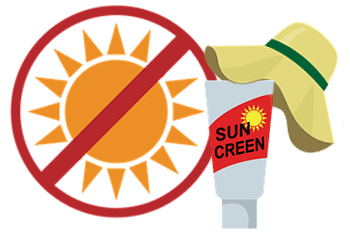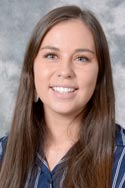Preventing Melanoma, a Sly Menace in North Dakota
by Danni Dearing
December 2021
North Dakota residents know that the sun can be elusive, especially during the winter months. However, this does not mean that protection from the sun is needless. Skin damage from the sun's rays – even sunshine reflected from snow and water – is the most common cause of skin cancer. Of the many forms of sun-linked skin cancer, melanoma is the most deadly. Although early diagnosis and treatment can help prevent death in most people diagnosed with melanoma, about 200 North Dakotans are diagnosed with this disease every year. That makes it important for Jamestown area residents to understand how best to prevent melanoma.
The vast majority of melanoma cases can be attributed to UV light exposure, with UV being short for ultraviolet light, a specific part of sunlight. One risk for developing melanoma, then, is childhood sun exposure. Experts say that adults who've had five or more sunburns in their youth actually double their risk for developing melanoma. Hair color makes a difference too. Redheaded individuals are twice as likely to develop melanoma. Other risk factors include family history of melanoma or a personal history of other types of skin cancers.
While natural hair color and family history can't be changed, the easiest melanoma risk to decrease is the artificial UV light of tanning beds. To some people, a tan may represent a sign of beauty and health, making tanning bed use desirable. But to medical professionals, any tan is a sign of skin damage, especially when the tan comes from a tanning bed. Why? Because the light from tanning beds has been found to be 10 to 15 times more powerful than the midday sun of the Mediterranean beaches, some of the strongest sunlight on the globe. For North Dakotans who want that tanned beach-look during mid-winter, it's important to know that that melanoma risk gets higher as the number of tanning bed sessions goes up or if they've had tanning bed use before age 35.
 Feeling as
though it's too late to prevent developing skin cancer?
No need to fret. The American Academy of Dermatology
has plenty of recommendations to reduce skin cancer even
after the age of 35. The mainstay of these
recommendations is still to reduce UV light exposure
whenever possible. First, avoiding tanning beds. Easier
now that the North Dakota winter has arrived, the second
recommendation is to seek shade when the sun's rays are
strongest between the hours of 11:00 am and 2:00 pm. For
many North Dakotans who work outdoors, UV light exposure
is unavoidable. For those workers, protection requires
wearing sun-protective clothing such as long-sleeved
shirts, wide-brimmed hats, and sunglasses with UV
protection. Broad-spectrum, water-resistant sunscreen
with a sun protection factor, or SPF, of 30 or higher is
recommended for daily use regardless of the season.
Feeling as
though it's too late to prevent developing skin cancer?
No need to fret. The American Academy of Dermatology
has plenty of recommendations to reduce skin cancer even
after the age of 35. The mainstay of these
recommendations is still to reduce UV light exposure
whenever possible. First, avoiding tanning beds. Easier
now that the North Dakota winter has arrived, the second
recommendation is to seek shade when the sun's rays are
strongest between the hours of 11:00 am and 2:00 pm. For
many North Dakotans who work outdoors, UV light exposure
is unavoidable. For those workers, protection requires
wearing sun-protective clothing such as long-sleeved
shirts, wide-brimmed hats, and sunglasses with UV
protection. Broad-spectrum, water-resistant sunscreen
with a sun protection factor, or SPF, of 30 or higher is
recommended for daily use regardless of the season.
Melanoma can be a fatal form of skin cancer, but it is a highly preventable disease. Of the many factors that increase the risk of developing melanoma, like hair color, and personal or family history, exposure to UV light is the most significant. Although North Dakota plains are not quite as sunny as Mediterranean beaches, North Dakotans still experience plenty of exposure to the sun's rays. Consider avoiding tanning beds, think about clothing choices, and always keep sunscreen handy to reduce the risk of melanoma.
This article also appeared in the January 19, 2022 issue of the Jamestown Sun.
About the Author
 Danni Dearing is a third-year medical
student at the University of North Dakota School of
Medicine & Health Sciences. She was selected as the
Jamestown participant for the school's ROME program, or
Rural Opportunities in Medical Education. Because the
program includes teaching student doctors about the
importance of how rural newspapers can deliver health
information, she has written this column for her ROME
community. The information is not for diagnosis or
treatment and should not be used in place of previous
medical advice provided by a licensed practitioner.
Danni Dearing is a third-year medical
student at the University of North Dakota School of
Medicine & Health Sciences. She was selected as the
Jamestown participant for the school's ROME program, or
Rural Opportunities in Medical Education. Because the
program includes teaching student doctors about the
importance of how rural newspapers can deliver health
information, she has written this column for her ROME
community. The information is not for diagnosis or
treatment and should not be used in place of previous
medical advice provided by a licensed practitioner.
